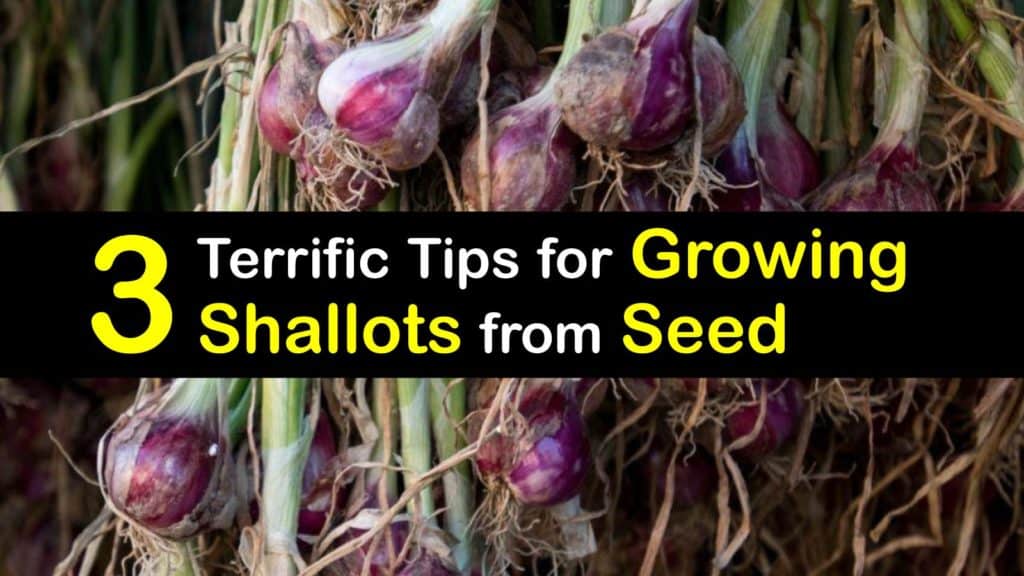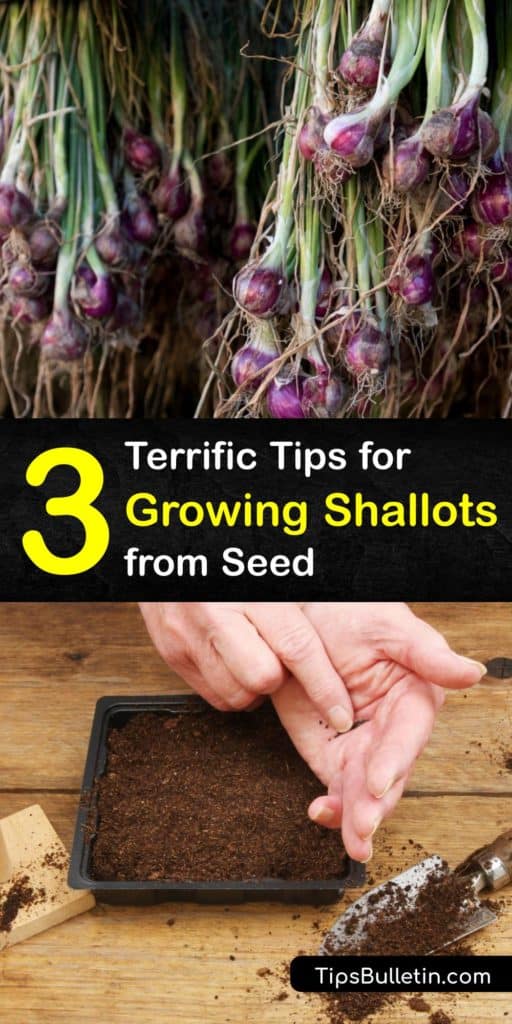Shallots (Allium cepa var. aggregatum) are a member of the onion family, along with veggies like leeks, green onions, and chives. They’re covered in papery skin and have layers like onions but form individual cloves like garlic. Read up on how to grow shallots from seed to enjoy these subtly flavored alliums minced in sauces and sautés.
Also known as multiplier onions or potato onions, shallots are a biennial in zones 2 to 10. There are two main types: French shallots and Dutch shallots.
French varieties are elongated with pinkish skin and may be heirloom types. It’s only possible to grow French shallots from sets, which are small bulbs. Dutch shallots, meanwhile, are larger and rounder, often with yellowish skin. Planting shallots from seeds is possible for Dutch shallots.

Tips for Starting Shallots from Seed
While there is a difference between a shallot and an onion, propagating them is basically the same. Have you been wondering how to plant shallot seeds? Either start to grow shallots at home indoors, then transplant the seedlings outside, or direct sow in the garden.
Getting Ready for Growing Shallots from Seeds
Shallot seeds are small and black. If you plant-shallots from seed, you have the option of saving individual bulbs for replanting in the spring.

Part of how to plant shallot seeds is preparation. There is no difference between green onions and shallots regarding planting. Shallots prefer loose, well-drained soil that’s rich in organic matter, with a pH between 6.0 and 7.0. The site should not have held Alliums, like onions or scallions, within the past three years.
Sandy loam is ideal. Amend soil for shallots with well-rotted manure or compost, or add 10-10-10 balanced fertilizer. For heavier soils, plant in a raised bed or raised rows to improve drainage. Full sun is best, although partial shade is acceptable.
How to Plant Shallot Seeds in the Garden
Similar to when to plant green onions, direct sow shallot seed. The best time to plant shallot seeds is in early spring, two to four weeks before the last frost. In zones 6 to 10, you may also sow seeds after the first fall frost.
Note that when you grow white onions from seeds or scallions, seeds planted closer together are likely to form a single bulb so allow enough space between them for adequate growth.
Keep the soil for shallots moist but not soggy until germination. Thin the shallot seedlings to two inches apart or three to four inches apart to get large bulbs.
How to Grow Shallots from Seed When Starting Indoors
If your region’s growing season is short, try planting shallot seeds indoors eight to ten weeks before the last frost. Fill a seed tray with good-quality potting mix, then make half-inch holes in the soil surface. Insert two seeds per cell and cover with soil.
Place the tray in a warm, sunny spot and keep the soil moist until germination. Put the germinated shallots on a sunny windowsill or under grow lights. Thin to one shallot seedling per cup when the plants are two to three inches tall.
Transplant outdoors when the seedlings are five to six inches tall and have at least three long leaves. Dig holes six to eight inches apart.
Growing Shallots from Seeds: Plant Care
Shallots have a shallow root system. Provide one inch of water weekly throughout their life cycle, and keep the bed weed-free. Be careful around the roots when weeding.
Feed a 10-10-10 liquid fertilizer every three to four weeks to fertilize shallots effectively. Spread organic mulch, like straw or wood chips, to discourage weeds and help retain moisture.
To prevent disease, practice crop rotation, ensure proper air circulation, use well-drained soil, and avoid overwatering. Install row covers to deter maggots.
Harvesting Shallots
Expect to harvest spring planting shallots in late summer. The way to harvest shallots is to look first at the tops. Harvest shallot bulbs when the tops of the plants turn yellow and dry. Gently pull out or dig up the plants.
Let the shallots cure in the sun for two to seven days. Curing mellows the bulbs’ flavor and extends their shelf life. When the plants are completely dry, clip off their leaves and roots and brush off loose dirt.
Store shallots in a cool, dry place in mesh bags. They keep for up to six months. Avoid moisture since that can cause mold or sprouting. Use shallots as a substitute for scallions in a recipe if you are out of green onions. The flavors are similar.
Growing shallots from seeds is an easy and enjoyable way to add homegrown veggies to your diet. Try using your shallots in sauces and salad dressings or serving them crispy on noodles.
Learn how to grow shallots from seed indoors or outside in the garden. Look for a site with loose, well-drained, fertile soil and full sun.

If you found these shallot planting tips helpful, please share this information about growing vegetables from seed with your friends on Facebook and Pinterest.